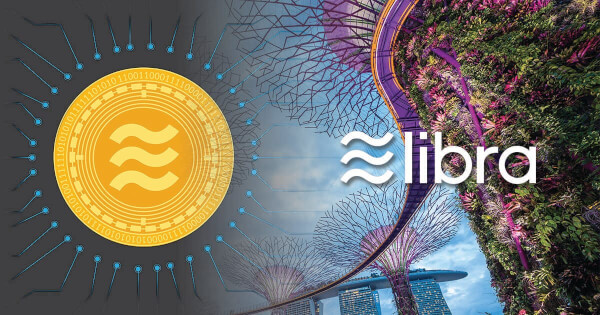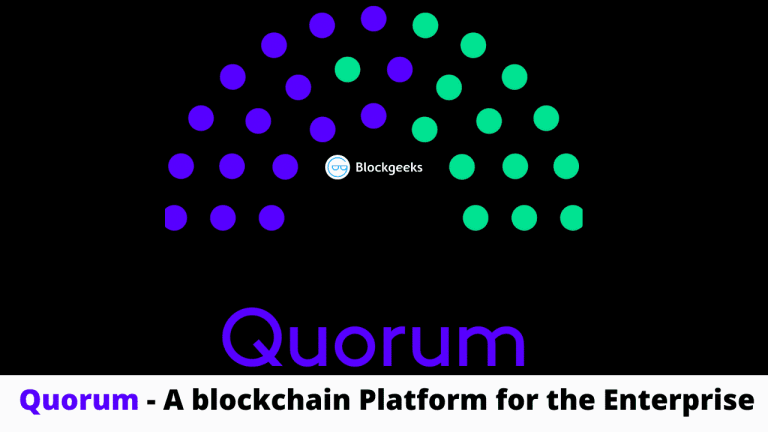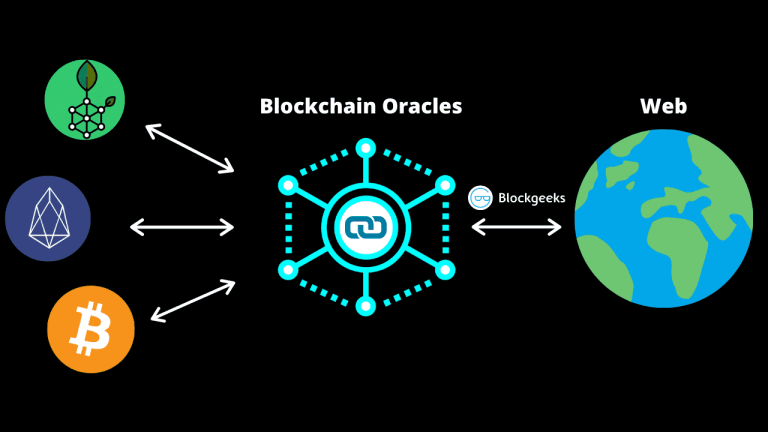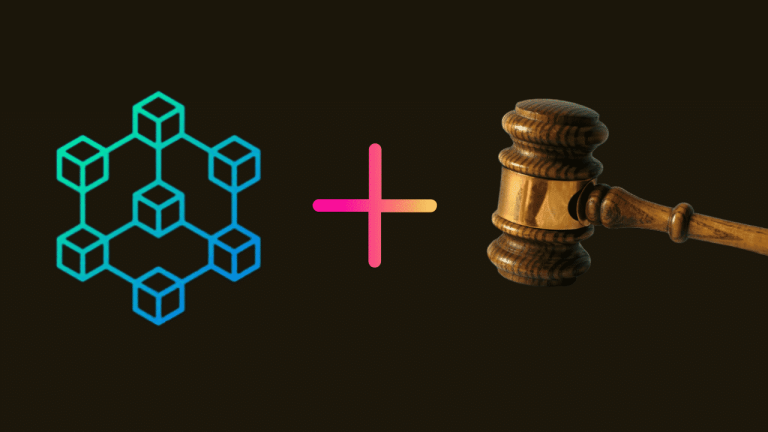Share and get +16 +16 This article will analyze the developments about Blockchain evidence and courts in the USA, China, Azerbaijan, the United Kingdom and Italy.A number of major jurisdictions across the globe have recently addressed the issue of the admissibility of evidence recorded on blockchain in courts. These developments have taken place in a number of ways; some jurisdictions have passed new laws to specifically regulate the legal recognition of blockchain evidence, others have amended existing laws, while certain jurisdictions have published statements clarifying their regulation under existing law.Blockchain Evidence and CourtsUSAThe Federal Government of the United States has not exercised its constitutional power to implement legislation regulating the admissibility of blockchain evidence in court. Thus, states enjoy residual power to implement their own legislation. The Federal Rules of Evidence establish a minimum requirement in what is referred to as the ‘best evidence rule’ which establishes that the best evidence must be used at trial. Rule 1002 of the Federal Rules of Evidence states “An original writing, recording, or photograph is required in order to prove its content unless these rules or a federal statute provides otherwise”.Several states have regulated blockchain through introducing their own legislation and rules, particularly with regard to the regulation of cryptocurrency – or as termed by various legislators, virtual currencies. New York kickstarted legislative developments in the USA through the regulation of virtual currency companies, and eventually, several states followed suit, with 32 states implementing their own rules and regulations. The states of Illinois, Vermont, Virginia, Washington, Arizona, New York and Ohio have passed or introduced legislation that specifically regulates the admissibility of blockchain evidence in court.IllinoisThe Blockchain Technology Act House Bill 3575, which was passed by the House of Representatives on the 29th May 2019 and came into effect in January 2020, regulates the use of blockchain technology in transactions and proceedings, provides limitations, and also defines terms such as blockchain and electronic record. The Act states that “a smart contract, record, or signature may not be denied legal effect or enforceability solely because a blockchain was used to create, store or verify the smart contract, record or signature”. Evidence of a smart contract, record or signature which was created, stored or verified through blockchain cannot be excluded in proceedings. Furthermore, where the law requires records to be in writing, electronic evidence recorded on blockchain is sufficient. Where a signature is required, submission of a signature recorded electronically on blockchain or blockchain evidence verifying the intent of a person to provide a signature is likewise sufficient.Certain limitations to the use of blockchain are also stipulated in the Act. A notable limitation is that where an agreement between the parties exists to conduct a transaction by using blockchain, and the law requires that such contract or record relating to the transaction is in writing, the legal validity of the contract may be denied if the blockchain containing the electronic record of the transaction is not in a form which may be stored and accurately reproduced for all parties. Another limitation is that where a notice or acknowledgement must be given in writing, this requirement is not satisfied by delivering or recording the notice or acknowledgement on blockchain where the notice is of cancellation or termination of a public utility, matters related to primary residences, health and life insurance policies, and recall of products.VermontHouse Act 868, ergo ‘An act relating to miscellaneous economic development’, passed on the 2nd June 2016 includes a section dedicated to the recognition of the validity of blockchain records and their admissibility in court. In essence, the Act brings digital records electronically stored on blockchain on par with Vermont’s rules of evidence, thus such records are admissible in court and have legal bearing. The Act states that a digital record electronically registered in a blockchain is self-authenticating if it is accompanied by a written declaration of a qualified person, made under oath, stating the qualification of the person making such certification and the date and time the record entered the blockchain, the date and time the record was received from the blockchain, that the record was maintained on the blockchain as a regular conducted activity, and that the record was made by the regularly conducted activity as a regular practice. However, the presumption does not extend to the truthfulness, validity, or legal status of the contents of the fact or record. Such digital record is considered as a record of regularly conducted business activity, unless the source of the information, the method or circumstance lack trustworthiness. The Act also lays down several presumptions. Firstly, the record is considered to be authentic. Furthermore, the date and time of the record is the date and time that the record was added to the blockchain. The person presumed to have made the recordation is also the one which the blockchain establishes. Persons against whom electronically stored evidence is presented may challenge the authenticity of such records by producing evidence demonstrating that the “presumed fact, record, time or identity is not authentic as set forth on the date added to the blockchain”.While the law still requires an element of human verification, the provisions of this act are still significant as they affirm the evidentiary potential of blockchain records. The ramifications of this Act would be further magnified if states such as New York and California implement similar provisions, where this type of evidence is more likely to be utilized.VirginiaHouse Bill 2415 titled ‘Business records; electronically registered on a blockchain self-authenticating document’ was submitted as a bill on the 1st September 2019 and has not yet been passed into law by the House of Representatives. The bill seeks to amend the Code of Virginia, and the provisions outlined in this bill are very similar to those contained in Vermont’s H.A. 868. The bill lays down that “in any civil proceeding where a business record electronically registered on a blockchain is material and otherwise admissible, the record shall be presumed to be self-authenticating and requires no extrinsic evidence of authenticity”. However, this presumption does not extend to the truthfulness, validity or legal status of the contents of the record. The presumptions established by the bill are identical to those laid down in Vermont’s H.A.868, regarding, inter alia, the authenticity of the record, the date and time, and the person who made the record. Another identical provision states that records meeting such requirements will be considered as records of regularly conducted business activity, unless the source of information lacks trustworthiness.WashingtonIn the State of Washington, Senate Bill 5638, an Act ‘Relating to recognizing the validity of distributed ledger technology’ was passed into law on the 26th April 2019 and came into effect on the 28th July 2019. The Act defines an electronic record as “a record generated, communicated, received, or stored by electronic means for use in an information system or for transmission from one information system to another”. Electronic records may not be denied legal effect, validity, or enforceability on the grounds that they are generated, communicated, received, or stored using distributed ledger technology.Arizona & New YorkArizona House Bill 2417 was signed into law on the 29th March 2017 and amended the Arizona Revised Statutes by adding a new section on electronic transactions. Through this amendment, a signature secured through blockchain is considered to be in electronic form and constitutes an electronic signature, and records or contracts secured through bloc
kchain are also considered to be in electronic form and to constitute electronic records. Furthermore, smart contracts may exist in commerce and contracts related to a transaction cannot be denied legal effect, validity or enforceability on the grounds that such contracts contain a smart contract term. Thus, legal certainty is provided regarding the enforceability and validity of smart contracts.In the State of New York, Assembly Bill 1683 and Senate Bill 4142 propose practically identical amendments to those presented in Arizona H.B. 2417 to the Electronic Signature and Records Act of the State Technology law. The Bills contain the same provisions regarding the recognition of electronic signatures and contracts secured through blockchain and the validity of smart contracts. A.B. 1683 is currently in Assembly Committee, while S.B. 4142 has passed Senate.OhioSenate Bill 300 was introduced in May 2018 and sought to amend the Uniform Electronic Transactions Act, with the original text containing provisions stating that “a record or signature may not be denied legal effect or enforceability solely because it is in electronic form”. The bill also stated that where law requires records to be in writing or requires a signature, electronic records and electronic signatures satisfy such requirements. Furthermore, the bill proposed the recognition of smart contracts having full legal effect and enforceability even if “an electronic record was used in its formation or…contains a smart contract term”.Some of these provisions included in Senate Bill 300 were incorporated into Senate Bill 200 which was signed into law on the 3rd August 2018. Through the promulgation of this bill, the Uniform Electronic Transactions Act was amended to state that “a record or contract that is secured through blockchain technology is considered to be in electronic form and to be an electronic record”, and electronic signatures secured through blockchain technology are also recognized as electronic signatures. However, the provisions in Senate Bill 300 recognizing the validity of smart contracts were omitted from Senate Bill 200. Thus, while the provisions regarding electronic records and signatures are similar to those passed in Arizona, the State of Ohio does not currently recognize smart contracts as valid unlike the State of Arizona.ChinaThe Hangzhou Internet Court in China was the first court to accept evidence recorded on blockchain in June 2018 in the case Hangzhou Huatai Yimei Culture Media Co. Ltd. v. Shenzhen Daotong Technology Development Co. Ltd. The plaintiff company had obtained a license to publish an article online from City Express Newspaper, which the website First Female Fashion Network, owned by the defendant company, republished without authorization. The plaintiff was authorized to enforce online infringements thus instituted proceedings in January 2018.The plaintiff had stored evidence of the copyright consisting of snapshots of the article webpages on a blockchain deposition service called Baoquan.com. The court examined the validity of the evidence presented by the plaintiff by analyzing the way Baoquan.com preserved the data, which consisted of obtaining a copy of the snapshot, source code of the webpage and invocation log and storing them in a package file. The package file’s hash value was then calculated and stored on the Factom and Bitcoin blockchains. The Court deemed this as reliable. The Court then proceeded to confirm that the hash values recorded on the two blockchains and the hash value represented by the plaintiff were identical, and the time stamps were also cohesive with the time when the webpage content was captured.The Court reiterated that blockchain is capable of providing secure electronic data and when examining the admissibility of this data as evidence, attention should be paid to the source of the data, whether the methods used for its collection and storage were reliable, and whether such evidence is associated with other evidence available.Through this judgement by one of the Internet Courts established in China, it is clear that China is laying the very foundations for admissibility of blockchain evidence in courts around the world.On the 7th September 2018, China’s Supreme People’s Court issued ‘Provisions of the Supreme People’s Court on Several Issues Concerning the Trial of Cases by Internet Courts’. These provisions regulate the proceedings of the country’s three Internet courts in Hangzhou, Beijing and Guangzhou which primarily deal with disputes involving online shopping, network service contract disputes, copyright infringement of work published online, and ownership issues of Internet domain names among others. Generally, the entire litigation process takes place online.Article 11 of the provisions regulate the admissibility of blockchain evidence and state that;“electronic data submitted by the parties concerned, if collected through electronic signature, trusted timestamping, hash value verification, blockchain and other evidence collection, and verified with retention and tamper-proof technical means or via the electronic forensics and deposit platform, which are able to prove its authenticity, the Internet Court shall confirm its authenticity”.This essentially confirms the decision taken by the Hangzhou Internet Court earlier in 2018, and extends the rules established therein to the other Internet courts.The Jiangsu High Court also issued ‘Guidelines on Implementation of the Most Stringent Judicial Protection of Intellectual Property Rights to Provide Judicial Guarantees for High Quality Development’ in September 2019. These guidelines cover several issues, including the admissibility of blockchain evidence. Article 9 specifically states that evidence collected or preserved technologically should be recognized at law, and judges should recognize evidence stored on blockchain as valid if it meets the standard of proof.On the 30th October 2019, the Beijing Internet Court decided its first case instituted by the plaintiffs ByteDance, the parent company of TikTok against HuoPai Video. TikTok is a mobile application where users upload and share short video clips, which has gained popularity globally. Baidu Technologies developed a very similar application called HuoPai, and uploaded one of the videos originally uploaded on TikTok without permission and even offered its users the ability to download such video. ByteDance sued for an injunction and damages. The case was filed online and the hearing was also conducted online, and the Court even accepted digital evidence recorded on blockchain. The third party platform Zhongjing Tianping Technology had stored evidence which proved that the video had been stolen, thus the Court was able to find Baidu guilty of copyright infringement.AzerbaijanIn October 2018, discussions were underway among the Azerbaijani Internet Forum (AIF) for the Ministry of Justice to implement blockchain technology in several departments within its remit. Currently, the Ministry provides more than 30 electronic services and 15 information systems and registries, including “electronic notary, electronic courts, penitentiary service, information systems of non-governmental organizations”, and the register of the population, among others. Part of the AIF’s plans is to introduce a “mobile notary office” which would involve the notarization of electronic documents. Through this process, the registry’s entries will be stored on blockchain which parties will be able to access but not change, thus preventing falsification. Future plans also include employing smart contracts in public utility services such as water, gas and electricity.United KingdomThe Digital Architecture and Cyber Security at Her Majesty’s Courts and Tribunals Service (HMCTS) announced plans to conduct a pilot project whereby DLT would be employed to securely store digital evidence in August 2018. £1.2 billion have already been invested in the modernization of courts in the United Kingdom, with the ultimate aim of digital transformation eliminating the use of paper to streamline the
courts’ processes and facilitate access to information.Through this innovative system, a digital audit trail would be created which provides a record of the ways in which digital evidence is created, accessed, and modified, and by which entity and from which location, which would enable a thorough examination of the event which led to such evidence. The project aims to harness the integrity and decentralization provided by DLT for improved “evidence sharing, identity management and ensuring citizens have maximum control over their own information”. The implementation of DLT would also reduce the cost and time taken up by the process of storing evidence, while preventing the tampering of evidence.In November 2019, the legal treatment of cryptoassets and smart contracts was ascertained through the publishing of the UK Jurisdiction Taskforce’s (UKJT) legal statement following consultation earlier in the year. UKJT, which forms part of the LawTech Delivery Panel, confirmed that smarts contracts have legal contractual force under English law, which requires the agreement of two or more parties intending to create a legal relationship through such agreement and who will each derive some form of benefit from such contract. These requirements may very well be satisfied by smart contracts, however, the Courts would enquire into each individual case, and more specifically the “parties’ words and conduct”, to determine whether these requirements were in fact satisfied when presented with a smart contract – just as it would enquire with any other contract. The statement reads that “in principle a smart contract can be identified, interpreted and enforced using ordinary and well-established legal principles”, both where code is used to define the parties’ contractual obligations or simply to create an agreement the meaning of which is found externally. The statement also confirms that both unilateral smart contracts such as those involving Decentralized Autonomous Organizations (DAOs), as well as lesser-used bilateral smart contracts, are recognized at law. Finally, where the law requires a written signature, this requirement can be satisfied by using a private key. On a practical note, when it comes to interpretation by the courts, it is clarified that smart contracts will be treated in the same way as other contracts, with the judges focusing their interpretation on the parties’ intentions as to what the nature of their obligations ought to be; however, expert evidence may be needed to interpret computer code.ItalyIn January 2019, the Italian Parliament passed Law No. 12/2019 which confirmed the legal validity of smart contracts and DLT. The law defines DLT as:“technologies and information protocols that use a shared, distributed, replicable, simultaneously accessible, architecturally decentralized registry on a cryptographic basis, such as to allow registration, validation, updating and archiving of data, both in clear and further protected by cryptography, that are verifiable by each participant, are not alterable and not modifiable”.The law states that the storage of a computerized document on DLT has the same legal effects as an electronic time stamp under Article 41 of Regulation (EU) No 910/2014, also known as the eIDAS Regulation. The Regulation defines an electronic time stamp as “data in electronic form which binds other data in electronic form to a particular time establishing evidence that the latter data existed at that time”. Article 41(1) of the Regulation states:“1. An electronic time stamp shall not be denied legal effect and admissibility as evidence in legal proceedings solely on the grounds that it is in an electronic form or that it does not meet the requirements of the qualified electronic time stamp.”However, Article 41 goes on to state that only qualified electronic time stamps “enjoy the presumption of the accuracy of the date and the time it indicates and the integrity of the data to which the date and time are bound”. In order for an electronic time stamp to be considered qualified, the following three requirements must be satisfied as set out in Article 42 of eIDAS:“1. A qualified electronic time stamp shall meet the following requirements:(a) it binds the date and time to data in such a manner as to reasonably preclude the possibility of the data being changed undetectably;(b) it is based on an accurate time source linked to Coordinated Universal Time; and(c) it is signed using an advanced electronic signature or sealed with an advanced electronic seal of the qualified trust service provider, or by some equivalent method.”Therefore, a qualified electronic time stamp would have to be made by an authorized certification body such as a qualified trust service provider, which is not common practice in most blockchains. This requirement runs counter to one of blockchain technology’s most important characteristic – decentralization – however, this categorization would only be required if the evidence presented is challenged to demonstrate the accuracy of the data presented. One can perhaps debate the possibility of expanding on the part relating to ‘equivalent methods’ in order to include trusted technologies such as DLT.Law No. 12/2019 also provides a definition of smart contracts, and states that where the law requires a written contract, smart contracts satisfy such requirement once the contracting parties are identified digitally.Through these clarifications, data stored on DLT as well as smart contracts are granted legal validity and are admissible in a court of law in Italy.The Future of Blockchain EvidenceIt is evident that several major jurisdictions are making noticeable developments towards granting blockchain evidence, particularly smart contracts, legal validity in an effort at providing more legal certainty on the regulation of blockchain technology. Out of the five countries analyzed, four countries have specifically amended legislation in this regard, with most laws providing similar definitions of smart contracts, DLT, cryptoassets and digital signatures. However, while these legislative developments set the foundation for the admissibility of blockchain evidence, in most jurisdictions courts are yet to give practical application to these provisions. China is an exception to this observation, with its Internet Courts hearing two separate cases where blockchain evidence was admitted and even affected the judgement given. With rapid developments in the industry seeing the increased dependability on DLT for a variety of transactions, even by national authorities such as Azerbaijan’s registries, courts will eventually be faced with numerous scenarios where parties will seek to support their claims with blockchain evidence. To this end, legal certainty must be ensured in every jurisdiction seeking to keep abreast with these technological developments.



![Blockchain Government Use cases – [Algorand, Power Ledger, and RSK] Blockchain Government Use cases – [Algorand, Power Ledger, and RSK]](https://cryptoroof.org/wp-content/uploads/2020/05/Blockchain-Government-Use-cases-Algorand-ICON-Power-Ledger-and-RSK-768x432.png)





